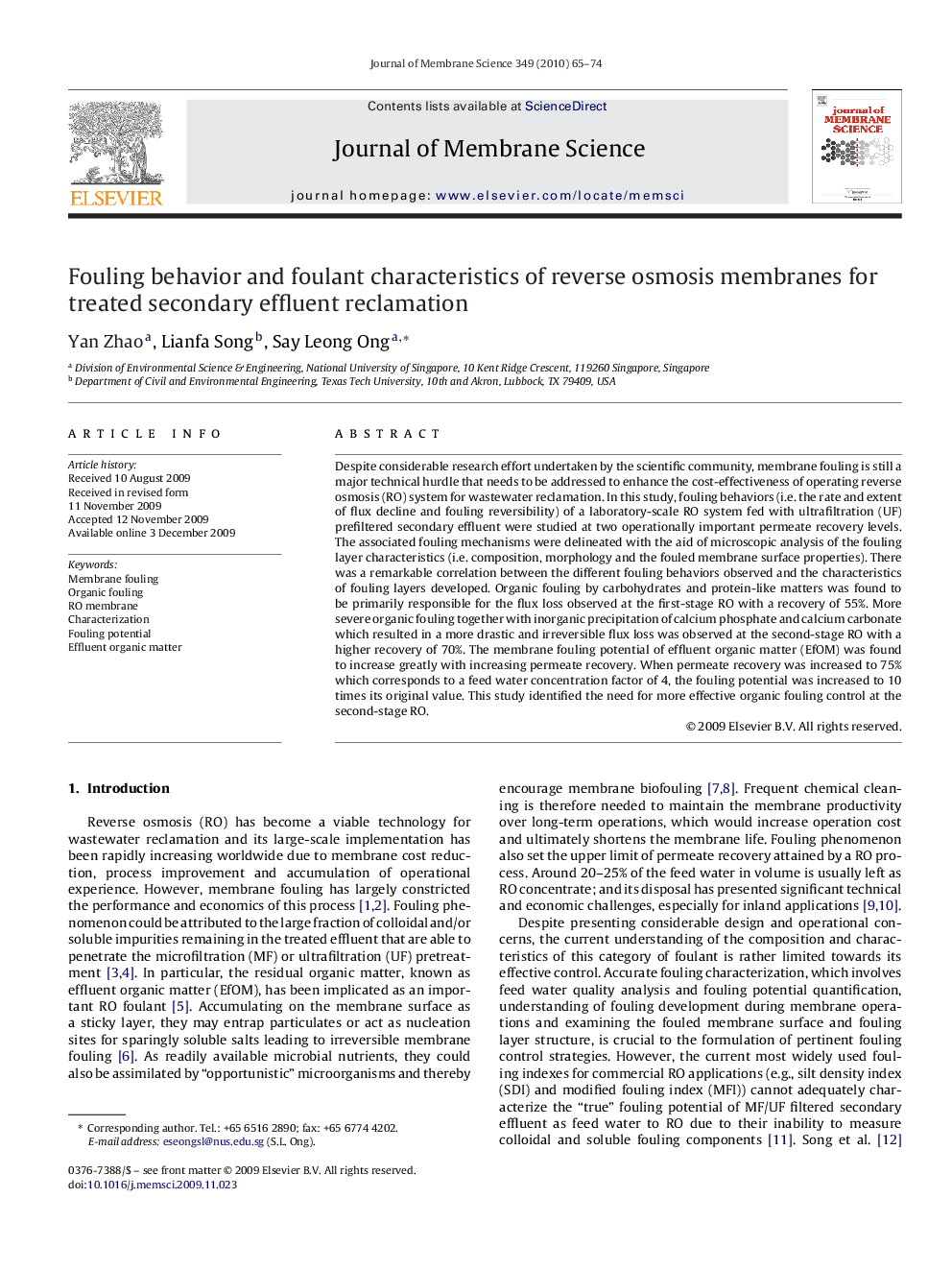| Article ID | Journal | Published Year | Pages | File Type |
|---|---|---|---|---|
| 636581 | Journal of Membrane Science | 2010 | 10 Pages |
Abstract
Despite considerable research effort undertaken by the scientific community, membrane fouling is still a major technical hurdle that needs to be addressed to enhance the cost-effectiveness of operating reverse osmosis (RO) system for wastewater reclamation. In this study, fouling behaviors (i.e. the rate and extent of flux decline and fouling reversibility) of a laboratory-scale RO system fed with ultrafiltration (UF) prefiltered secondary effluent were studied at two operationally important permeate recovery levels. The associated fouling mechanisms were delineated with the aid of microscopic analysis of the fouling layer characteristics (i.e. composition, morphology and the fouled membrane surface properties). There was a remarkable correlation between the different fouling behaviors observed and the characteristics of fouling layers developed. Organic fouling by carbohydrates and protein-like matters was found to be primarily responsible for the flux loss observed at the first-stage RO with a recovery of 55%. More severe organic fouling together with inorganic precipitation of calcium phosphate and calcium carbonate which resulted in a more drastic and irreversible flux loss was observed at the second-stage RO with a higher recovery of 70%. The membrane fouling potential of effluent organic matter (EfOM) was found to increase greatly with increasing permeate recovery. When permeate recovery was increased to 75% which corresponds to a feed water concentration factor of 4, the fouling potential was increased to 10 times its original value. This study identified the need for more effective organic fouling control at the second-stage RO.
Keywords
Related Topics
Physical Sciences and Engineering
Chemical Engineering
Filtration and Separation
Authors
Yan Zhao, Lianfa Song, Say Leong Ong,
